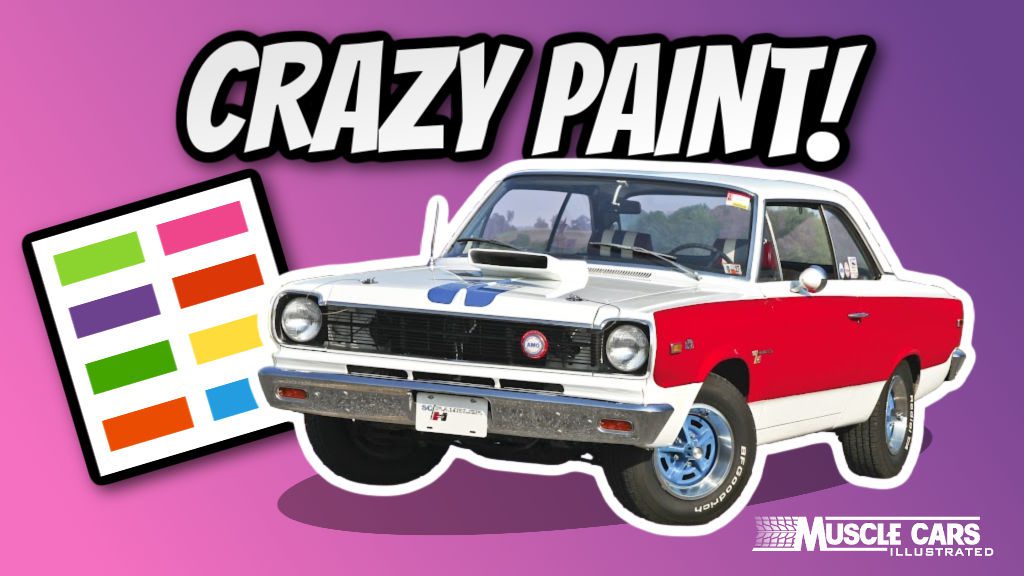
Muscle car paint colors after 1969 turned vibrant, colorful, and sometimes downright obnoxious.
Some might even call these paint colors “crazy.”
During the height of the muscle car era, American auto manufacturers dug deep into their bag of tricks to get noticed by potential buyers.
Some tried to get attention with clever car names… others used racing stripes… some went with hood scoops… while others still used rear spoilers to get attention.
Some auto manufacturers even tried combining them all.
While all auto manufacturers successfully used color to make their cars stand out, they used standard colors that didn’t visually explode like the ones below.
Thanks to the colorful era towards the end of the 60s, muscle car paint colors started to get more and more vibrant as well.
Let’s see some, shall we?
Table of Contents
Muscle Car Paint Colors
Following is my list of the top 10 craziest muscle car paint colors from the factory.
Saturn Yellow
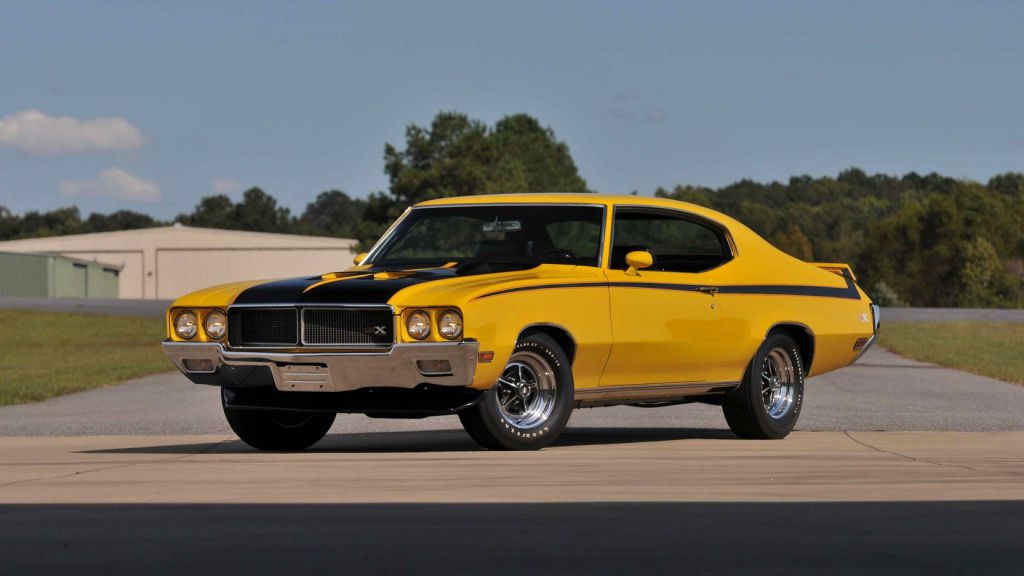
Saturn Yellow was offered on the 1970 Buick GSX—a one-year-only paint color. It was one of two paint color options offered that year, with the other being Apollo White. The Buick GSX was Buick’s counter to Pontiac’s GTO Judge, Oldsmobile’s 4-4-2 W-30, and Chevrolet’s Chevelle SS. A 1970 Buick GSX in Saturn Yellow is shown above.
Carousel Red / Hugger Orange
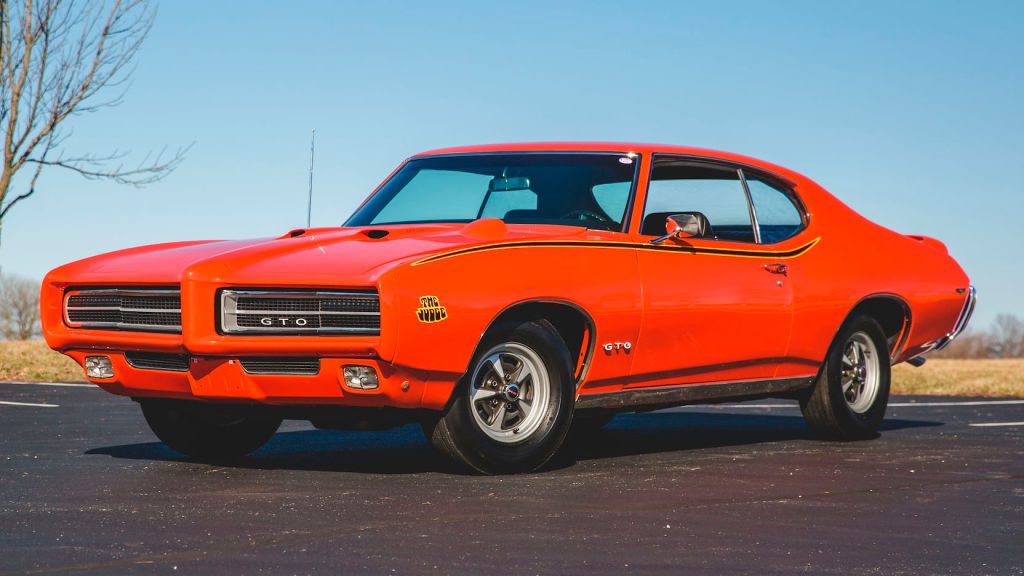
Carousel Red paint (Code 72) appeared on the 1969 Pontiacs, including the Firebird and GTO, while simultaneously appearing as “Hugger Orange” on Chevys, including the Camaro and Chevelle. This paint color could be seen on other GM muscle cars up through 1976 using different names, including Monaco Orange, Red Orange, Medium Orange, and Ontario Orange.
Orbit Orange
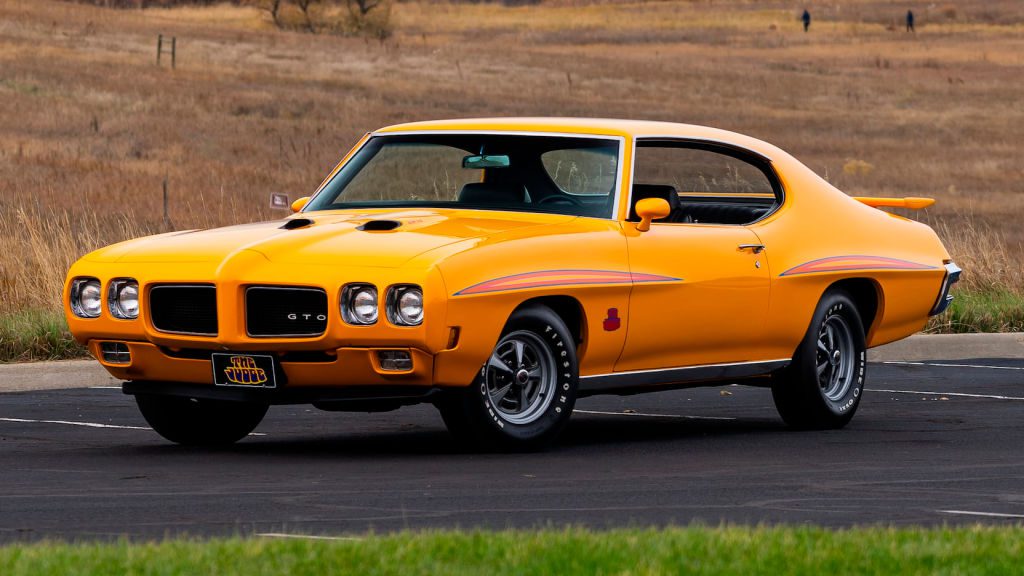
The 1970 Pontiac GTO and Judge sported Orbit Orange (Code 60) on their panels, a color made famous by its appearances in the movies “2-Lane Blacktop” and “Dazed and Confused.” In the latter film, the Dazed and Confused car is one of the first things you see in the film. Take a look at the stunning example of an Orbit Orange 1970 Pontiac GTO Judge above and admire the impressive combination of color and muscle.
Sassy Grass Green / Green Go
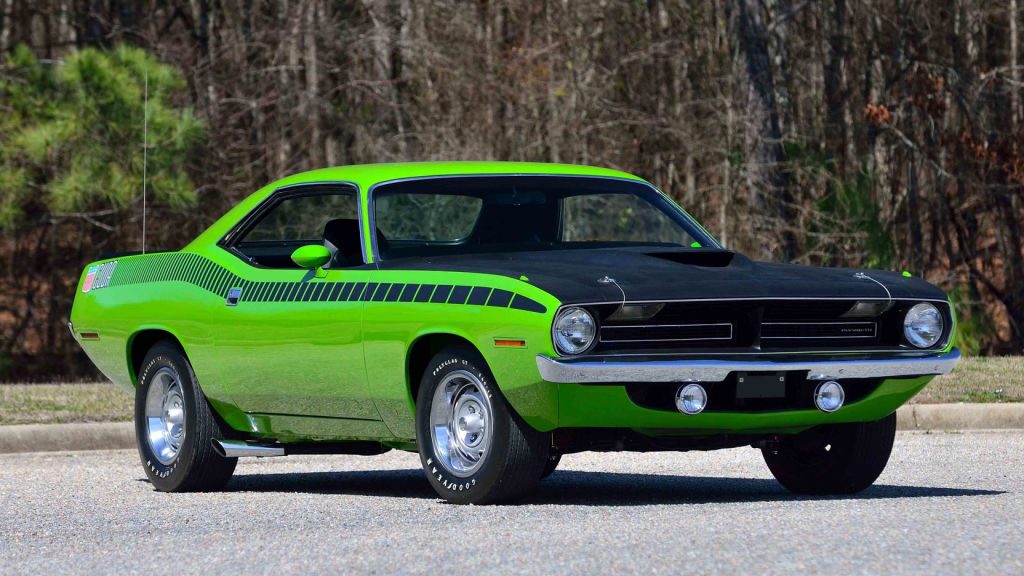
Chrysler muscle cars made some of the most iconic and vibrant colors known during the muscle car era, known as Mopar high impact colors. At Plymouth, it was called Sassy Grass Green and Green Go over at Dodge. Shown above on a 1970 Plymouth AAR Cuda.
Plum Crazy / In Violet

First offered in 1970, Plum Cray was one of the most flamboyant colors offered by Chrysler. At Plymouth, it was called “In Violet’, this color could be seen on GTXs, Challengers, Dusters, and Road Runners. While at Dodge, it was known as “Plum Crazy” and was sprayed on the likes of Chargers, Cudas, Demons, Satellites, and Super Bees. In-Violet paint is shown above on the 1971 Plymouth Hemi GTX.
Grabber Blue
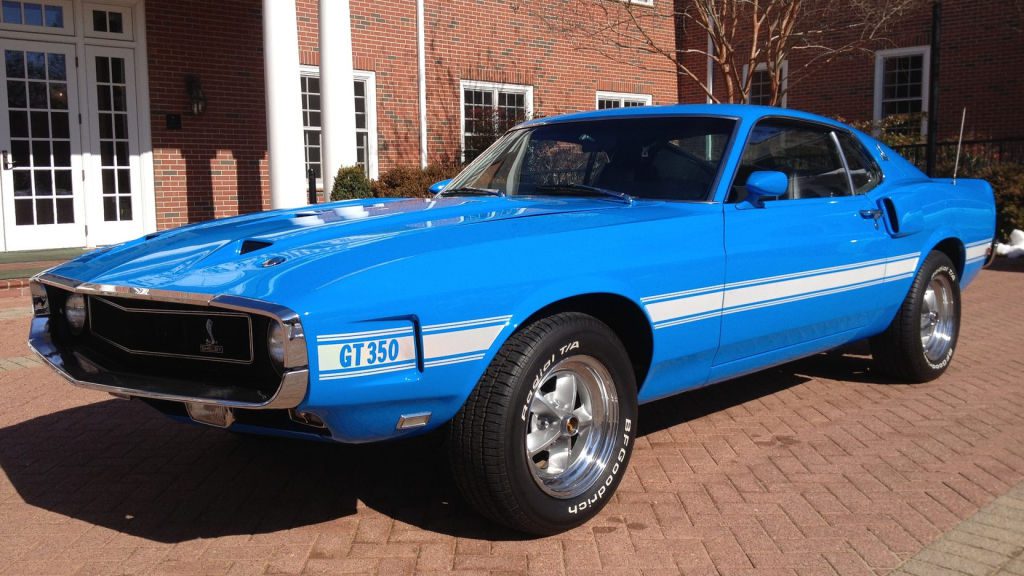
One of the most iconic Ford Mustang colors ever made, Grabber Blue (Paint code J), certainly grabbed the attention of muscle car buyers. Originally an exclusive option on the 1969 Shelby Mustang, Ford quickly added it to their pony car paint lineup the very next year because of all the attention the Shelby received. Shown above on a 1969 Shelby GT350.
A-Scheme
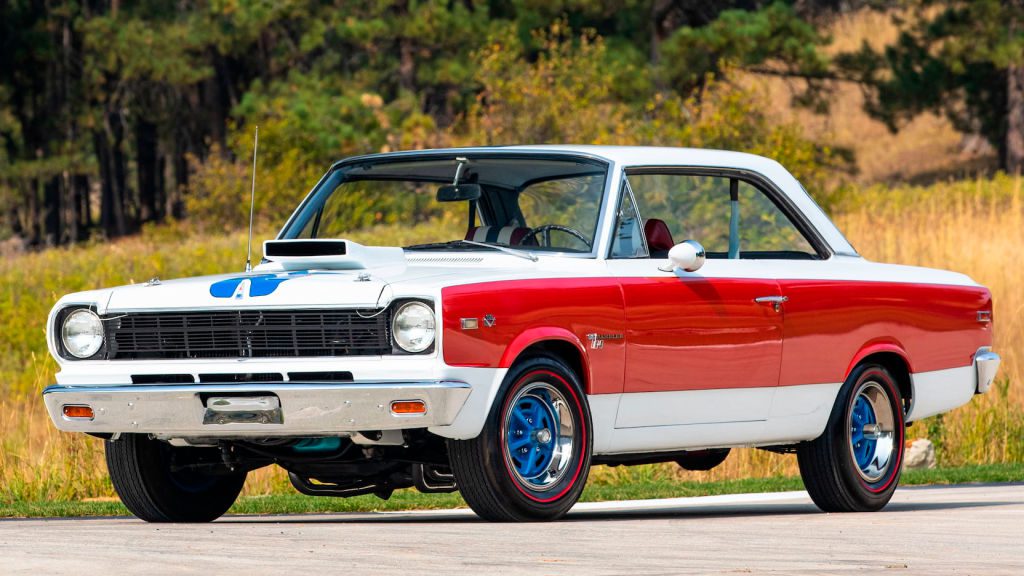
Not to leave AMC Muscle Cars out of the picture, the 1969 Hurst Performance AMC SC/Rambler offered two tri-color paint schemes: A and B. Both of these were sprayed with a patriotic Matador Red (code P39), Frost White (Code 972), and Commodore Blue (Code P84) paint scheme. The A-Scheme paint color combination is shown above on a 1969 AMC SC/Rambler.
Grabber Green
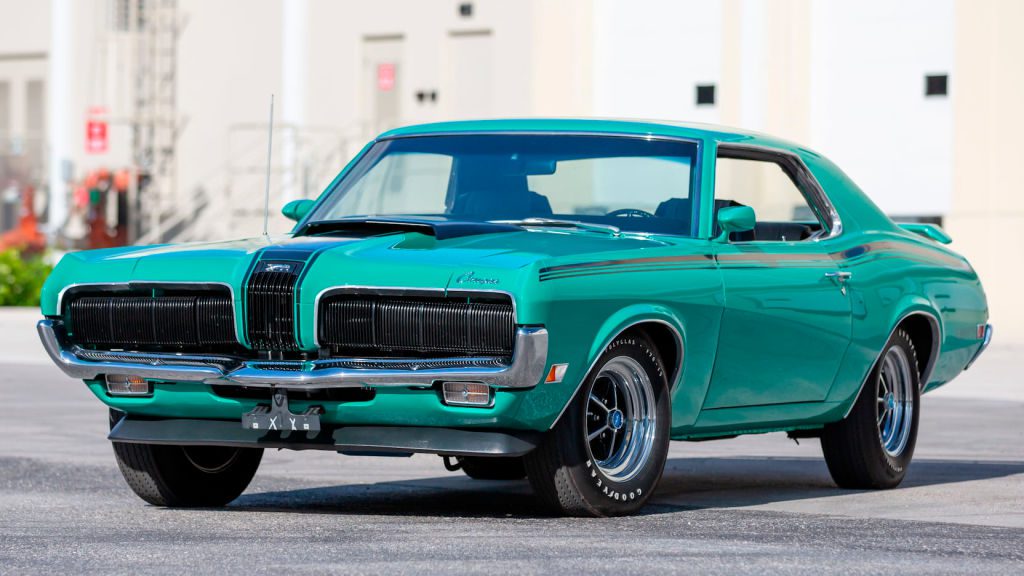
The “Grabber” line of colors, including Blue, Orange, Yellow, and Green, was introduced in 1969. Grabber Green was first available on the Shelbys and then on Ford Mustangs the very next year. Grabber Green is shown above on a 1970 Mercury Cougar Eliminator.
Rally Green
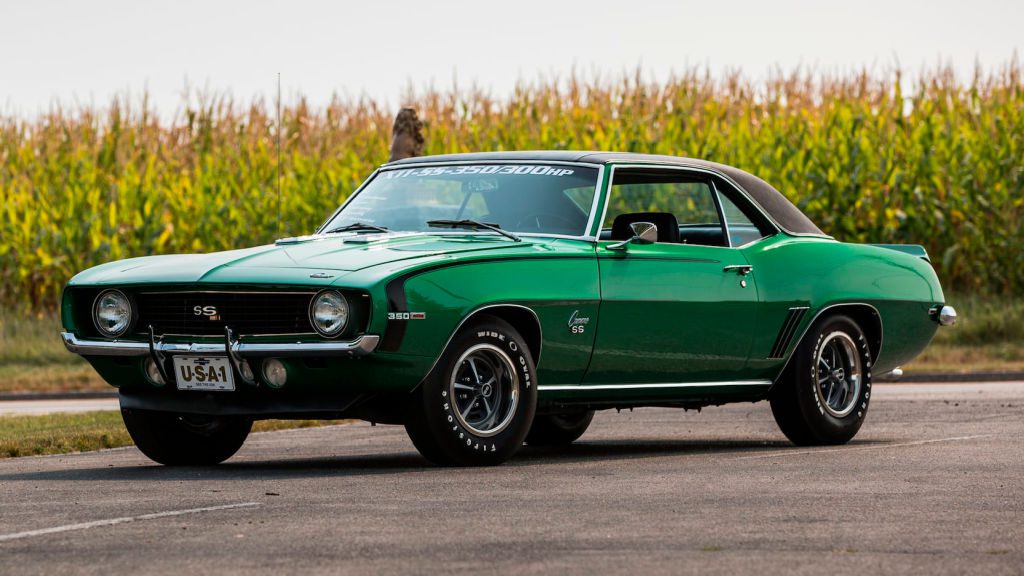
First appearing in 1968, Rally Green was only available on the Camaro. The next year, Rally Green was extended to other muscle cars in the Chevy lineup, including Chevelle, Chevy II, and Nova. Shown above on a 1969 Chevy Camaro SS.
Panther Pink / Moulin Rouge
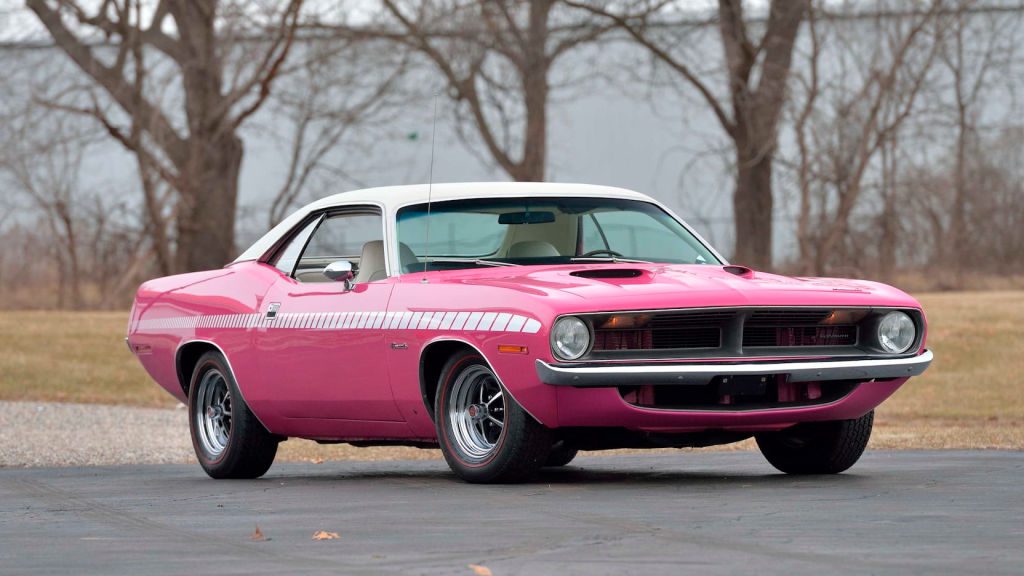
Panther Pink is a very curious color name choice for Dodge. A swap of words, the character was based on the popular “Pink Panther” animated character that appeared in the opening/end credits of the “Pink Panther” movie starring Peter Sellers. Paint code FM3, Plymouth wasn’t to be left out and renamed their version of it “Moulin Rouge.” Shown above on a 1970 Plymouth Cuda.
Conclusion
In the world of muscle cars, wild colors have always been an expression of boldness, individuality, and speed. From Saturn Yellow to Moulin Rouge, the craziest muscle car paint colors of the past have left an indelible mark on automotive history. Whether it was the vibrant greens and blues that evoked a sense of power and performance, or the purples and pinks that signaled an unapologetic spirit of rebellion, these colors reflected the personality of the drivers who dared to pilot these iconic machines. As we look back on the most outrageous muscle car colors, we can’t help but feel a sense of awe and wonder at the sheer audacity of their creators. These cars may have been a product of their time, but their legacy lives on, inspiring new generations of automotive enthusiasts to push the boundaries of style, speed, and imagination.
Take Our Poll!
Crazy Paint Color
"*" indicates required fields
Well, there you have the craziest muscle car paint colors from the factory. Be sure to subscribe if you like this kind of content!
Ryan
Ryan has owned muscle cars since 1986 and currently owns a 1972 Dodge Charger Rallye. He combines passion and experience to create engaging content for fellow muscle car enthusiasts. In 2018, he founded Muscle Cars Illustrated, authoring hundreds of articles on tips, history, and trends in the muscle car industry. He attends national car shows, auctions, and museums to stay current with the latest developments in the muscle car industry.Comments
Comments are closed.

Like your passion. Getting ready to paint a 71 super bee back to plumb crazy. Original paint is under the hood, all over the trunk and various other places. Noticed it when I started sanding it getting it ready for primer. A no Bondo, no rust original numbers matching rig.Some farm kids back in the mid 70s painted a blur over the plum crazy.Keep up the good job.